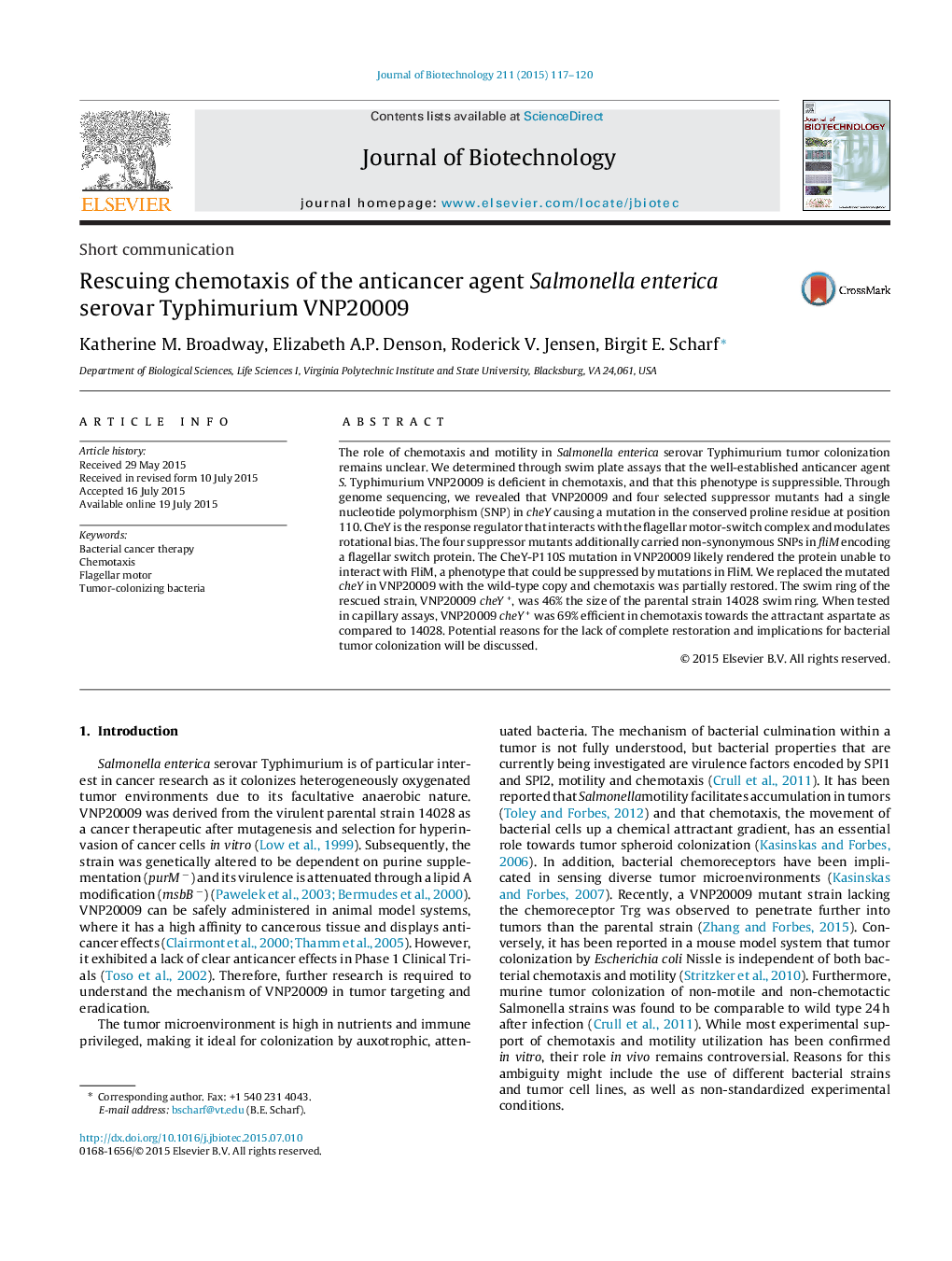| Article ID | Journal | Published Year | Pages | File Type |
|---|---|---|---|---|
| 6490965 | Journal of Biotechnology | 2015 | 4 Pages |
Abstract
The role of chemotaxis and motility in Salmonella enterica serovar Typhimurium tumor colonization remains unclear. We determined through swim plate assays that the well-established anticancer agent S. Typhimurium VNP20009 is deficient in chemotaxis, and that this phenotype is suppressible. Through genome sequencing, we revealed that VNP20009 and four selected suppressor mutants had a single nucleotide polymorphism (SNP) in cheY causing a mutation in the conserved proline residue at position 110. CheY is the response regulator that interacts with the flagellar motor-switch complex and modulates rotational bias. The four suppressor mutants additionally carried non-synonymous SNPs in fliM encoding a flagellar switch protein. The CheY-P110S mutation in VNP20009 likely rendered the protein unable to interact with FliM, a phenotype that could be suppressed by mutations in FliM. We replaced the mutated cheY in VNP20009 with the wild-type copy and chemotaxis was partially restored. The swim ring of the rescued strain, VNP20009 cheY+, was 46% the size of the parental strain 14028 swim ring. When tested in capillary assays, VNP20009 cheY+ was 69% efficient in chemotaxis towards the attractant aspartate as compared to 14028. Potential reasons for the lack of complete restoration and implications for bacterial tumor colonization will be discussed.
Keywords
Related Topics
Physical Sciences and Engineering
Chemical Engineering
Bioengineering
Authors
Katherine M. Broadway, Elizabeth A.P. Denson, Roderick V. Jensen, Birgit E. Scharf,
